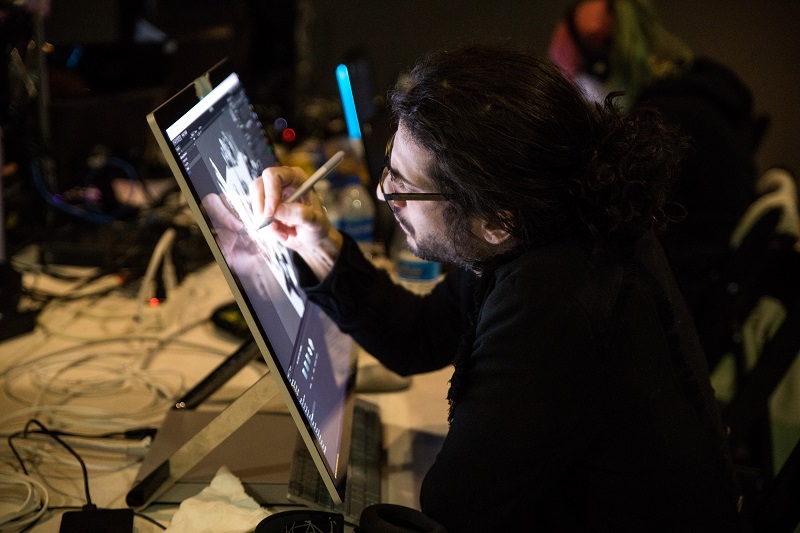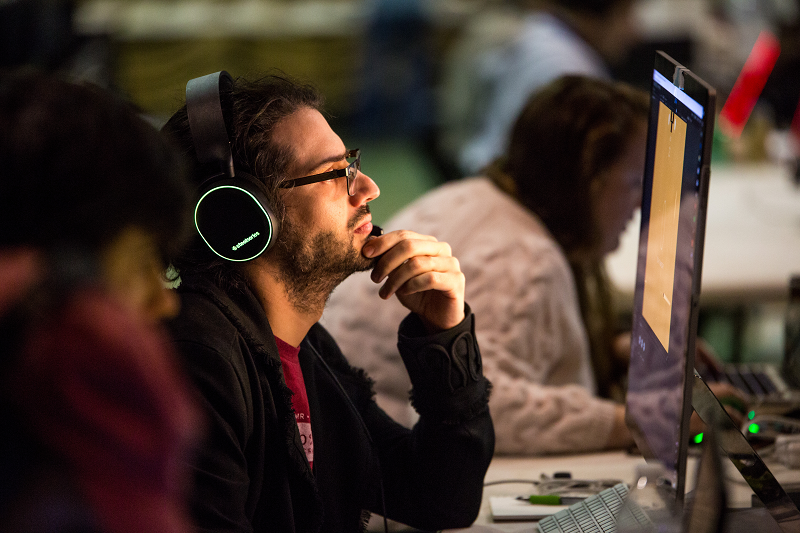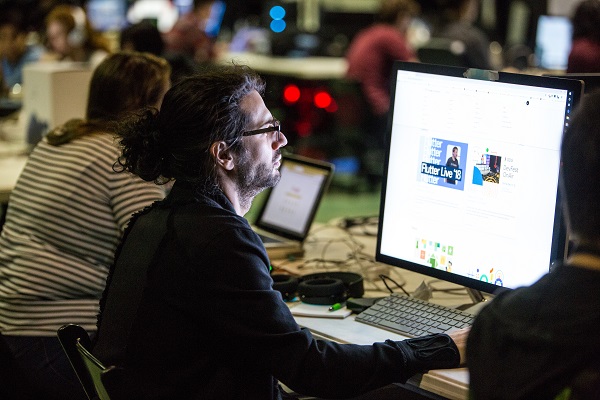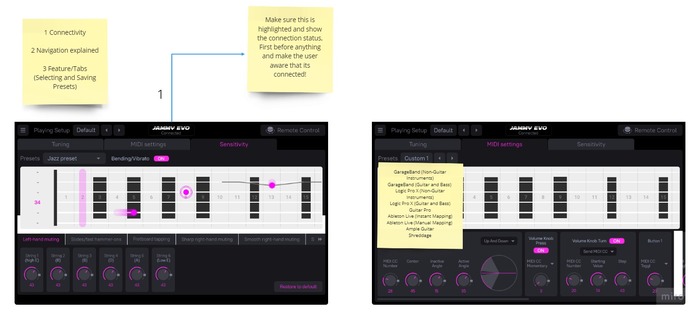
Before Springboard, Volkan Kantar was a graphic designer who had dabbled in game design. After founding his own game studio and launching an Android game called Little Fish, Volkan realized that growing and monetizing the game was “a whole different ball game” from building the game itself.
UX designers are becoming a fixture in the gaming industry, either working directly with or supporting game developers. As more and more developers opt to release free-to-play games that make money from subscriptions and in-game purchases, user retention has become inextricably linked to revenue. From onboarding new players to displaying progress bars and designing intuitive controller interactions, UX design can make or break a game.
Game design is a sought-after career, but the path to becoming one is muddy at best. As user experience becomes an increasingly important component of game design, UX design has emerged as a promising entry point into the gaming industry.
After completing the UI/UX Career Track at Springboard, Volkan landed a job at Microsoft as a UX designer on the Casual Games team, working alongside well-known game designer Kevin Lambert. During the “nerve-wracking” interview process at Microsoft, Volkan says he beat out another candidate in the final round who had eight years of experience in game design.
It's pretty cool, actually. It's everything that I wanted and have been studying for the last four years. I work directly with Microsoft Games, specifically casual games. I work with a product manager, design director, and artist. Together, we are developing the next phase of Microsoft casual games.
I think so. The main three games we are working on include Solitaire, Minesweeper, and Sudoku.

Yes and no. We are not only upgrading the UI, we are also extending it to different platforms. Basically, our task is to integrate all the casual games within the Microsoft Teams app environment [a business collaboration platform for video conferencing, calls, and more]. There are a lot of limitations and design directions to work with because we are basically trying to create an app within an app.
The idea is to make Microsoft Teams more consumer-friendly—not just intended for businesses. Once that integration happens, we will likely explore how to integrate more apps within the Microsoft Teams environment.
Yes, definitely. I became a UX/UI designer so that I could become a better game designer. I started my career as a game designer, but then I realized you need to be more than just a gamer to be a good designer. You need to understand what users need, how interactions need to happen, how to reduce the number of clicks people have to make. You have to create an experience that is very easy but functional. These are all hardcore UX/UI topics. So game design and UX design really go hand in hand if you think about it that way.
It's hard to say if it’s new, but there is definitely a different mindset towards it. Lots of games have a very bad UI, which is sad to see. They lose a lot of revenue. Some games receive a lot of hype, and people have high expectations when they are released. But then these games fail because of bugs but also because of UI challenges. People don't find it easy to play or they don't like the interactions and how the inventory is sorted, for example. These are all UI elements.
"UX/UI is really big in gaming, but it has recently become a bigger [discipline], especially with major companies taking accessibility more seriously."
We have to think about how we can make interactions keyboard-ready. How can we [create interactions] using verbal cues? A lot of things need to be considered and UX/UI really lands in the middle of it.

The important thing right now in casual gaming is staying competitive. Players want to spend less money on games and be subjected to fewer advertisements. So there’s a balance when you’re building a game because you want to make the game free so you can reach a lot of people. You also don’t want to monetize it in such a way that every five seconds there's an advertisement. You want user retention to be solid.
So in order to ensure people keep playing the game, the best-case scenario is to make the gameplay as fun and extended as possible before showing the first 30-second-commercial to the user. Some [game publishers] offer monthly subscriptions so players can remove all advertisements, but some players don’t mind short advertisements [in exchange for playing for free].
Yeah. This is a big claim, obviously, but it looks like the gaming industry is going in a direction we’ve never seen before. Right now you can buy games outright or pay a monthly subscription to play, but I think in the next few years, gaming companies will start paying gamers to actually play their game, and they’ll start earning more revenue from [in-game purchases]. As long as the player is playing, you can make revenue.
I spent about three years learning lots of creative tools, and I was trying to get into motion animation. Before Springboard, I finished an online boot camp for graphic design and started doing a little bit of freelance work, but it was really not satisfying to me. So I established my own LLC, a game studio, and I created a game [an Android app called Little Fish] and tried to put it out there and hoped that I could survive off of it. But that didn’t work out because it was a way bigger endeavor than I anticipated, and even just the monetization aspect was a whole other ballgame. So I was looking for a way to give myself an edge.
Through my internet research, I found Springboard, General Assembly, and CareerFoundry. I spoke with all of their representatives. Springboard has a deferred tuition option where you can pay only after you land a job. That was really the determining factor for me.
It was the mentorship. Going forward, if I ever try to study something new, I would probably seek a one-on-one mentor. When you’re studying on your own, when you hit a roadblock, you [try to resolve it] and move forward, but eventually, the roadblocks become too many and you really don’t know where you’re going. And that's exactly where Springboard came in. It was very valuable to be able to go through my designs and talk about what I’m struggling with. The Springboard education was also very good, the courses were structured well and covered a lot of things. If you know what you’re looking for and what you want to do, it’s like having a ladder to climb.
I had actually started a job at another company, but I was still waiting on an interview with Microsoft. Working for another company gave me confidence, even though I’d already completed an Industry Design Project with Springboard. This time, I was working with the scrum team and I had a scrum master and a product manager. I was the only designer in the company and I was struggling, but at the same time, I realized I was building a good foundation [of UX design experience].
Shortly after that, I did an interview with Kevin Lambert, the design director at Microsoft Casual Games. I researched him beforehand and it turned out he was one of my childhood idols. I had played his games when I was little. He designed Dungeon Siege II.

I was pretty flattered that I got the interview. The interview went really well and Kevin sent me a design challenge. After I submitted the design challenge, they said they had never seen such a comprehensive submission. There were a couple of places where I added bonus information—I created some edge cases and a small sitemap and designed their screens in high-fidelity. I also did a bit of user testing and wrote everything in a report.
After that, there was a three-week wait time, which was very nerve-wracking. They said they needed to test three other candidates. In the end, I tied with one other candidate, basically. After that, we did three more rounds of interviews. I met with the product manager, the main designer, and the artist-designer of the team. Some of the interviews were really technical and some of them were casual.
I was told that the other candidate I was tied with had been a designer for eight-plus years and had worked in the gaming industry his entire career. They told me “We selected you simply because you submitted almost identical design challenges [compared to the other candidate] even though you had almost no experience.”
Kevin gave me a chance. That was all I was looking for.
Yes. Actually, potential is way more important for them. Even though their hiring process looks very objective, they’re human. Once you connect with them on that level, the interview process goes way smoother.
I worked with Jammy, a company that builds MIDI guitars [to help people learn how to play using a computer]. Jammy was a really interesting project because I enjoy music, so it has a place in my heart.
Their app is very important for them because everything that passes through the guitar has to be through that interface.
 The guitar player has to be able to pick the guitar, plug it in and be able to start playing as easily as possible. But they also need to have all the advanced tuning settings, presets, and add-ons.
Jammy already had a product that was built for mobile, but they wanted to build an interface that would emphasize the guitar settings. The first thing I did for them was a heuristic analysis. I analyzed four of their competitors and recommended how we could take certain ideas and make them more suitable for our product. That was really important for the product manager at Jammy because they didn’t know much about UI/UX design. I also built them a small interactive onboarding experience.
The guitar player has to be able to pick the guitar, plug it in and be able to start playing as easily as possible. But they also need to have all the advanced tuning settings, presets, and add-ons.
Jammy already had a product that was built for mobile, but they wanted to build an interface that would emphasize the guitar settings. The first thing I did for them was a heuristic analysis. I analyzed four of their competitors and recommended how we could take certain ideas and make them more suitable for our product. That was really important for the product manager at Jammy because they didn’t know much about UI/UX design. I also built them a small interactive onboarding experience.
Getting into game design right out of the gate is hard. It’s easier to take smaller steps, like starting with UI/UX design. But at the same time, UX is technical and more scientific than game design and it teaches you everything a game designer eventually needs to know.
When you say “game designer,” you don't normally think about UX/UI designer, but you also expect designers to know everything about the user experience, and games are all about user experience.
Good games are made from graphics, stories, and atmosphere. But a lot of things are combined together with their UI—how will you play the game? How will you interact with it? By starting off in UX/UI, you can become a motion designer or 3D artist if you learn a little bit of software. I feel like the theoretical part of UX/UI design is very solid and can prepare you for any other high-end design job like being a 3D artist. UX/UI really changed the way I look at creative outlets. So I think if you’re looking for a career change, UX/UI is a beautiful place to start.









